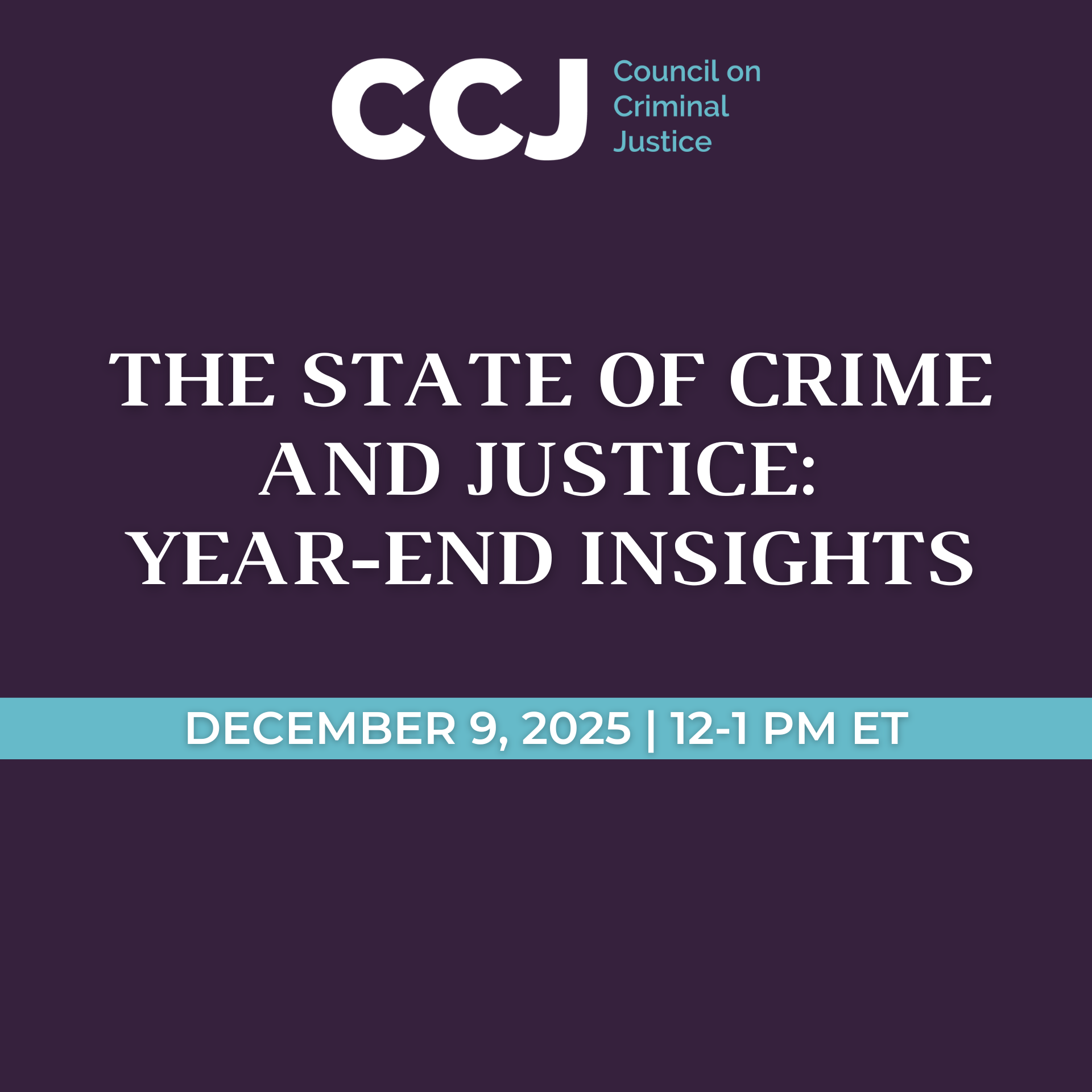At Eighth Meeting, Group Examines Impacts of Victimization and Trauma on Mental Health and Violent Crime
This bulletin addresses the issue of trauma and its impact on victimization and perpetration of violent crime. It also examines the trauma recovery center model and opportunities for further research in the field.
At its eighth meeting, the Violent Crime Working Group discussion featured presentations by Stacey Wiggall, Director of the USCF Trauma Recovery Center Technical Assistance Program, and Charlotte Bailey, Policy and Program Associate at the Council on Criminal Justice.
What We Know
- Gun violence disproportionately impacts the poor and powerless in society. Violent crime devastates communities already suffering under high rates of concentrated poverty. In 2019, homicide was the leading cause of death among young Black men and boys, causing more fatalities than the nine other leading causes combined. For Latino and White young men and boys, homicide was the second and third leading cause of death, respectively. Despite overall declines in violent crime over the past three decades, one recent study indicated that the relative inequality between the safest and most dangerous neighborhoods in Chicago rose by 10 percent between 1990 and 2010, and suggested that these disparities are increasing nationwide.
- Repeat victimization and polyvictimization are common. More than one third of victims of a violent crime have been repeatedly victimized. Victims of violent crime are four times as likely to be victimized again. Of the 1.5 million people treated for a violent injury each year, 45 percent will be reinjured within five years. The small percentage of people who are victimized more than once accounts for a disproportionately large number of victimizations.
“Of the 1.5 million people treated for a violent injury each year, 45 percent will be reinjured within five years.”
- Most victims of violence experience trauma. Trauma concerns an individual’s mental, emotional, and physical responses to horrific conditions or events. In the context of community gun violence, trauma is a response to experiencing or witnessing shootings, homicides, or the death of a loved one. In communities highly impacted by gun violence, Post-Traumatic Stress Disorder is more common than among veterans of the wars in Afghanistan, Iraq, or Vietnam.
- Most victims do not become offenders, but most offenders have been victims. Studies show that youth who experience chronic exposure to violence are more than thirty times more likely to become chronic violent offenders. This well-understood relationship between past victimization and criminal behavior is known as the victim-offender overlap. Researchers posit several theories explaining this overlap and have identified factors at the individual, relationship, community, and societal level that impact behavior.
What To Do
- When working with victims and survivors of violent crime, utilize a trauma-informed approach. As one group member put it, being trauma-informed means, first and foremost, “Do no further harm.” According to the Substance Abuse and Mental Health Services Administration, a trauma-informed approach to working with victims of crime is one that acknowledges the impact of trauma and recognizes its symptoms. By integrating knowledge about trauma into policies, procedures, and practices, program providers can avoid retraumatizing victims while delivering services and support. A trauma-informed approach to care can be applied across programs, organizations, and systems to protect clients, participants, or patients from experiencing additional harm.
“When working with victims and survivors of violent crime, utilize a trauma-informed approach. As one group member put it, being trauma-informed means, first and foremost, ‘Do no further harm.’”
Where To Go
Several federal funding programs can support trauma-recovery services and other kinds of assistance for victims of community violence:
- As of the publication of this bulletin, Congress is debating whether to appropriate $5 billion for community violence intervention programming as part of the budget reconciliation, which includes $2.5 billion allocated to the Centers for Disease Control to support “funding for community violence and trauma interventions” (Sec. 31064).
- In the administrative guidance for the $350-billion State and Local Recovery Funds in the American Rescue Plan, the U.S. Department of the Treasury is clear that eligible expenses must support interventions that “first, identify a need or negative impact of the COVID-19 public health emergency and, second, identify how the program, service, or other intervention addresses the identified need or impact” (86 FR 26788). The Treasury’s guidance explicitly states that the violence and mental health needs associated with the pandemic are aspects of its public health emergency, and that “behavioral health care,” which would include trauma recovery services, is an eligible expense to address these impacts (86 FR 26791).
- Also at the national level, several federal grant-making agencies sometimes offer funding opportunities that can be used to support trauma-recovery services and victim assistance. These opportunities are typically forecasted toward the end of the calendar year, published in the winter, and closed in the spring. To learn about these opportunities, visit grants.gov, which provides guidance on how to apply for federal funds and allows for searches by keywords. Additionally, the Department of Justice and the Department of Health and Human Services, among other federal agencies, have historically supported various components of violence reduction programs.
- At the state and local level, the Department of Justice formula awards, specifically Edward Byrne Memorial Justice Assistance Grant (JAG) Program and the Victim of Crime Act (VOCA) Victim Assistance Formula Grants, provide annual funding that can support trauma recovery services for victims of community violence. To learn more about federal funds administered by state and local governmental agencies, identify your State Administrative Agency and learn about the policies and procedures that govern their grant making.



